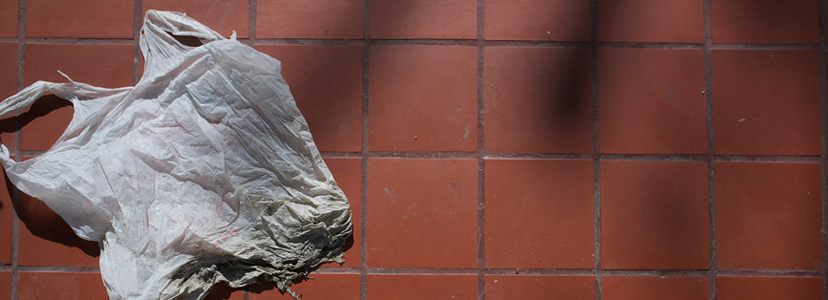An environmental guide to plastic carrier bags

The arguments about the environmental impact of plastic, paper, and cloth or cotton bags continue to rage, and it is not as clear cut as you might think that the first listed of these necessarily represent the greatest threat.
Nevertheless, we do all worry about the environment and we are regularly encouraged to reduce the number of plastic carrier bags we use and to think carefully about the choices we make. There is already a 5p charge in place for ‘single use’ bags in Wales, Scotland and Northern Ireland, with a similar levy to be introduced in England in October 2015. The charge will apply to supermarkets and larger stores only.
Six months after the charge was introduced in Scotland, research indicated that plastic carrier bag use had dropped by 80%, but those opposed to the policy claim that consumers are merely switching to other alternatives, and that as a result sales of plastic pedal and swing bin liners have risen equally dramatically.
The term ‘single use’ is somewhat misleading anyway, as most plastic carriers handed out in supermarkets and other retail outlets can be – and often are – reused a number of times. What the policy is trying to do is discourage people from just binning them immediately the weekly shop has been unloaded, which is surely a worthwhile objective.
In this world of environmental awareness, we bandy words around like ‘biodegradable’ and ‘compostable’ and feel righteous when we buy something that is one these. But how many of us actually know for sure what they mean? And how does this apply to the carrier bags we use?
Recyclable carrier bags
Not many people are aware of this, but in fact nearly all plastic carrier bags are actually fully recyclable (i.e. they can be made into another plastic product, such as a black bin bag); it’s just a question of finding someone to do it. Most councils don’t collect them kerbside with the bottles, paper and cardboard, which makes it harder for people to dispose of them responsibly, but many supermarkets do now have collection points. However, we can all recycle them ourselves by using them as bin bags rather than putting them in one.
Compostable carrier bags
Obviously, something that is ‘compostable’ can be put into the compost with your potato peel, egg shells and used tea bags. For something to be labelled as ‘compostable’, 90% of the film has to be able to degrade (i.e. break down into smaller parts), become non-visible, demonstrate no negative effects on the composting process and contain a level of heavy metal below the permitted maximum, all within six months. That’s under laboratory conditions, though, so unless you have the most perfectly located compost heap in the country, possibly the world, yours is unlikely to go that fast, so don’t try and use it to feed next year’s crop of potatoes just yet.
Biodegradable carrier bags
Biodegradation is basically the chemical dissolution of a material by bacteria or other biological means. Pretty much anything will biodegrade eventually, but some things take longer than others. A glass bottle, for example, takes about a million years. A traditional plastic bag could take anywhere from 500 years to forever to biodegrade, the length of time being dependant on the amount of heat, light and moisture to which it is exposed. Biodegradable carrier bags, on the other hand, should degrade in landfill and compost bins within 60 days. Things labelled as biodegradable have usually been treated with something to degrade them more quickly.
OXO-Degradable carrier bags
An OXO-Degradable bag is a ‘normal’ plastic bag with an additive (usually a tiny amount of a metal compound such as iron, manganese, nickel or cobalt), which makes the plastic degrade quicker, become water wettable, and used as a food source by microbes. There have been serious doubts raised about the benefits of oxo-degradable technology. Basically, in the open environment degradation can happen pretty quickly, perhaps somewhere between two and eighteen months, although this still depends on exposure to oxygen. If it ends up in landfill, it’s unlikely to degrade at all.
Dave Smith
Latest posts by Dave Smith (see all)
- An environmental guide to plastic carrier bags - 22nd June 2015
- Millimetres and litres: a guide to choosing the right sized box - 11th June 2015
- The Davpack Christmas Sale – There’s More! - 12th November 2014
